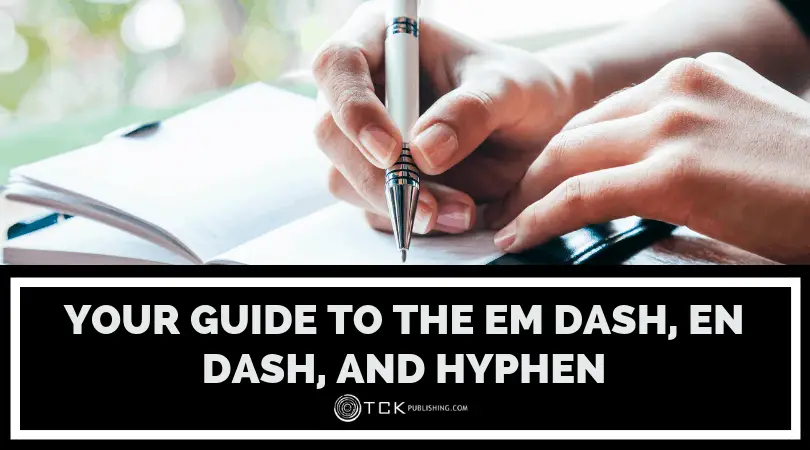
Dashes are great tools that can bring added style and emphasis to your writing, but only if you know how to use them correctly.
Many writers confuse the em dash with the en dash, or even the hyphen (which is technically not a dash at all). These little mistakes can make even the best writing look sloppy or unprofessional.
Avoid these common mistakes and make your writing more effective by learning the proper use of dashes and hyphens.
The Em Dash
The em dash is a versatile punctuation that can substitute for commas, parentheses, or colons—not to mention they look pretty cool, too.
Named for its size (it’s about the width of the capital letter M), it can serve a number of functions:
To Indicate Parenthetical Information
Em dashes are often used to set off parenthetical information in sentences, since they put more emphasis on the information in between.
To Set Apart Appositives That Contain Commas
Appositives are small pieces of extra information that are added into a sentence for clarification or elaboration.
Commas are usually used to indicate appositives, but if an appositive itself contains commas, the sentence can get confusing. Using two em dashes can add clarification.
To Highlight a List
When a sentence begins with a list, an em dash is better suited for separating the list than a colon. This helps to focus the three items into one idea, and it’s also easier for readers to comprehend.
To Mark a Turn in Thought
Particularly useful when writing dialogue, em dashes can be used to indicate interjections or changes in thought mid-sentence.
Copy and Paste An Em Dash
—
The En Dash
Also named for its size (it’s roughly the width of the capital letter N), the en dash is mostly reserved for expressing number ranges or connected words.
To Indicate Spans of Time or Number Ranges
When indicating spans of time or a range of numbers, use an en dash to separate numbers. In this context, the dash is usually read aloud as “to.”
To Indicate Relationships or Direction
The en dash can also be used to indicate a connection or relationship between two words, as well as a direction.
To Express Compound Adjectives
The en dash should be used when connecting terms that contain hyphens themselves, or when using a two-word phrase as a modifier.
Copy and Paste an En Dash
–
Hyphens
Not technically a dash, hyphens (-) are usually used to join words or parts of words. They cannot be substituted with other types of dashes, so learning when to use them is important.
Two-Word Adjectives
Two-word adjectives (like “two-word” in this sentence) require hyphens in order to show readers that the two words work together to create meaning.
With Nouns and Adjectives Plus Present Participles
Hyphens are required when you combine a noun or adjective with a present participle (words eding in -ing).
With Nouns and Past Participles
A hyphen is required when a compound modifier is used in combination with a past participle. However, this only applies when the compound comes before the noun it describes.
Hyphenated Compound Words
Hyphenated compound words are words that contain hyphens between them (such as mother-in-law), but many have become closed compounds over time (like teenager), so refer to a dictionary if you have doubts about a certain word.
Hyphens With Numbers
When spelled out, all numbers between twenty-one and ninety-nine should be hyphenated.
Copy and Paste a Hyphen
–
Know Your Dashes
Knowing the difference between the different types of dashes and hyphens will make you a more precise and effective writer.
Take some time to study the em dash, en dash, and hyphen to avoid common grammatical mistakes and ensure that your writing makes a great impression.
Do you have any tips for remembering punctuation rules? Feel free to share them in the comments below!
If you found this post helpful, then you might also like:
- 9 Ways to Use a Colon: A No-Fear Guide to Correct Colon Usage
- The En Dash: When and How to Use It
- The Em Dash: When and How to Use It
- The 10 Most Common Grammar Mistakes and How to Avoid Them
As a blog writer for TCK Publishing, Kaelyn loves crafting fun and helpful content for writers, readers, and creative minds alike. She has a degree in International Affairs with a minor in Italian Studies, but her true passion has always been writing. Working remotely allows her to do even more of the things she loves, like traveling, cooking, and spending time with her family.

Great article, very diligently written. More clarity could be brought with examples, which are prominently missed.